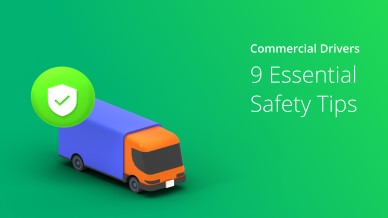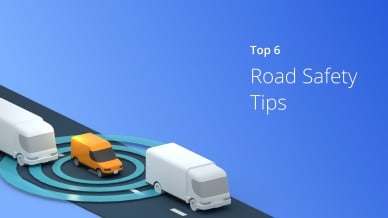Road accidents in the US have gone up, even though there has been less driving due to the Coronavirus stay-at-home orders, according to a recent report by the National Safety Council (NSC).
There has been an 8% drop in the total number of roadway deaths compared to March 2019. Yet, the data indicate a year-on-year 14% increase in the fatality rate per distance driven in March, with an 18.6% drop in the number of miles driven during March compared to the same time last year.
The mileage death rate per 100 million vehicles driven was 1.22 in March compared with 1.07 for the same month last year. And, motor vehicle crash deaths for the current year have so far totaled 8,640.
Specifically, the following states have experienced significant increases in the number of roadway deaths in the first three months this year:
- Connecticut (42%)
- Louisiana (23%)
- New York (17%)
- Arkansas (16%)
- Illinois (11%)
- Nevada (10%)
- North Carolina (10%)
- Oklahoma (9%)
- California (8%)
- Tennessee (6%)
- Texas (6%)
ALSO READ: Worst Cities to Drive in the US
Yet, other states have seen a remarkable decrease:
- Hawaii (-32%)
- Idaho (-28%)
- Oregon (-24%)
- Iowa (-13%)
- Maryland (-13%)
- Michigan (-12%)
- South Carolina (-12%)
- Arizona (-4%)
Clearly, road traffic crashes are not new. In fact, it is the leading cause of death in the US.
According to a report, over 38,000 people die every year in motor vehicle crashes on US roadways and the traffic fatality rate is 12.4 deaths per 100,000 inhabitants.
Want To See For Yourself How Route4Me Can Boost Your Profits?

Many factors contribute to road crashes and result in deaths and injuries. These include:
- Non-roadworthy vehicles
- Inadequate post-crash care
- Poor road infrastructure and management
- Unenforced or non-existent state traffic laws
- Unsafe driving behaviors
Below, we discuss some of the possible measures you can take to help your drivers avoid car accidents.
Control Reckless Driving
According to the NSC report, speeding was a key factor in the alarming rise in the crash death rate.
“Disturbingly, we have open lanes of traffic and an apparent open season on reckless driving,” said NSC President Lorraine M. Martin.
Some possible measures and tools you can implement to encourage safe driving practices include the following:
- Rank your drivers, using driver scorecards, based on how safe they drive and a calculation of the number of risky moves they make.
- Regularly give your drivers feedback on their on-road behaviors.
- Incentivize your drivers with a reward program, such as Safe Driver of the Month.
- Adopt a GPS tracker that comes with a speed alert feature so you can stay informed about drivers violating the speed limit. In this way, you can communicate with the driver and take corrective action immediately.
Plan Routes with the Current Road Situation in Mind
Stay informed about any bad road conditions so your drivers can avoid those routes. You can ask your drivers for details to identify such areas.
Also, you can use a technology solution like a route planner to factor in avoidance zones, road conditions, and other critical constraints (such as weather and traffic) based on the latest and historical data. Such route planners would factor all this in automatically for vehicle routing and scheduling.
Avoid Distracted Driving
Distracted driving is another major reason for the rise in traffic deaths.
According to a report, nine people die every day in the US due to distracted driving and over 1.6 million motor vehicle crashes are caused every year by cell phone use while driving. So, if you haven’t done so yet, it’s time to consider the impact of distracted driving.
Below are some steps you can take to ensure your drivers stay safe:
- Avoid multitasking.
- Use bluetooth or voice commands only when absolutely necessary.
- Don’t allow any grooming activities, while driving.
- Ensure food is always consumed either before or after a trip, never during.
Also, read about the seven tips to reduce road distractions and how artificial intelligence-powered driving technology can help drivers stay more focused.
Train Drivers on Defensive Driving Techniques
You can’t just make your drivers refrain from driving aggressively; other drivers on the road might make mistakes or drive aggressively which may result in crashes. To avoid such crashes, your drivers have to be prepared to handle the other drivers’ mistakes. So, training your drivers on defensive driving will help you and your business in the long run.
Below are some tips on defensive driving which you should ask your drivers to follow:
- Never get drawn into aggressive driving practices, such as overtaking or tailgating. When you feel unsafe, pull over.
- Do not drink and drive.
- Maintain a safe distance from other vehicles.
- Expect other drivers to make mistakes, while staying conscious enough to react appropriately.
- Always wear a seat belt.
Read this article on defensive driving 101 to learn more tips to keep your driver safe.
So, how do you ensure your drivers’ safety? Do you have any questions? Please feel free to leave your comments below.
Want To See For Yourself How Route4Me Can Boost Your Profits?







